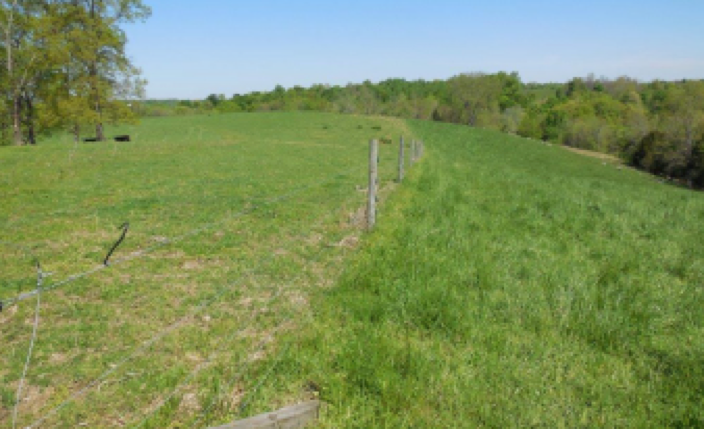|
Steve Higgins and Lee Moser If you ask a beef producer what their output is, they may say meat, when in fact, their answer should be forages. Without abundant forages, producers cannot increase the mass of grazing stock. The volume of forages in a pasture affects stocking densities and the amount of time cattle can spend in a pasture. Maximum forage production is accomplished by providing maximum cover, balanced fertility, deep well drained soils, and plant-available water. The water that falls on and over a farm’s landscape is transient. A producer’s goal should be to preserve water on the farm until it can be replenished again by the next precipitation event. This means that infiltration and water retention needs to be maximized and the volume of runoff that can cause erosion should be minimized. Producers who focus on these goals should be able to enhance beef production and will be able to manage better the moderate agricultural droughts that we encounter in Kentucky. Drought preparedness starts with the implementation of Best Management Practices (BMPs) on Kentucky’s farms by utilizing an Ag Water Quality Plan. Implementing BMPs that support the following “Principles of Drought Preparedness” can improve a producer’s ability to cope with the additional stress a drought can add to soil, plants, and livestock. Principles of Drought Preparedness
Overtaxing soil resources can and will lead to damage. In extreme cases, the damage caused can be extremely difficult, if not impossible to correct. Simply removing the cattle or allowing natural methods to correct the damage may not work or may take many years to correct using natural forces. In some cases, improving infiltration rates requires mechanical correction. All of these negative effects are magnified when drought strikes. Producers should implement practices that preserve topsoil and increase organic matter content, while avoiding compaction. The previously suggested practices are presented as a systematic approach to dealing with drought in Kentucky. They require a producer to implement adaptive management strategies that modify the operation to the environment instead of modifying the environment to the operation. Practices that increase, secure, and optimize the available water on the farm should be chosen to increase the effectiveness and efficiency of the operation. Producers should prioritize addressing areas that are the most limiting production areas through self-evaluation and implement additional BMPs or practices to offset the limitations. Providing a source of water makes a field usable, but may reveal soil fertility issues or the need for improved forages, indicating that this is a dynamic process. More than likely, the processes and practices implemented in this procedure complement a producer’s agriculture water quality plan. The beauty of this process is the improvement of the overall productivity of the farm, while maintaining and improving the integrity of natural resources. For full details on BMPs for drought preparedness, click on the button below to access the University of Kentucky Extension publication "Drought Risk Management for Beef Cattle Farms"
Comments are closed.
|
Archives
June 2024
Categories
All
Welcome |
CONTACT US |
EMAIL SIGN UP |
|
Eden Shale Farm
245 Eden Shale Rd. Office: (859) 278-0899 Owenton, KY 40359 Fax: (859) 260-2060 © 2021 Kentucky Beef Network, LLC.. All rights reserved.
|
Receive our blog updates
|


 RSS Feed
RSS Feed
